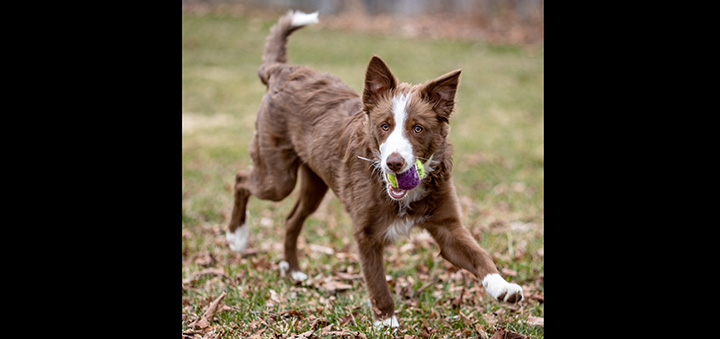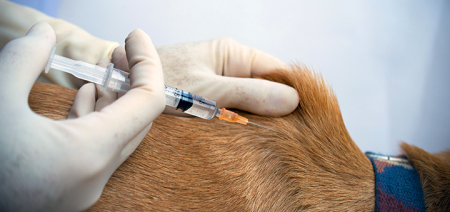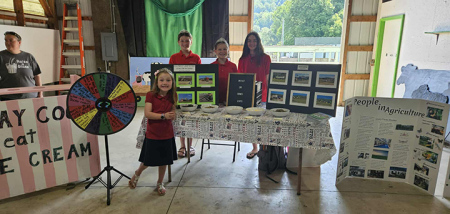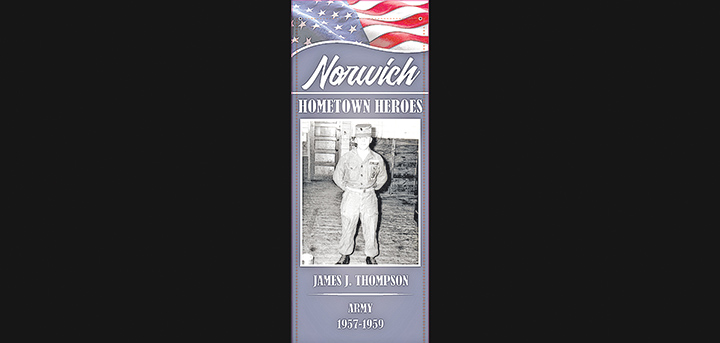What Motivates Your Dog?
Published:
June 15th, 2023
By:
Sarah Genter
 Is your dog motivated by food, toys, or affection? Using your dog's favored reward system is key to effective training. After I realized Ripley wasn't engaged in training and uninterested in the treat rewards I was offering, I switched my reward method to play and had much better results. (Photo by Dustin Genter of 5th Dimension Photography)
Is your dog motivated by food, toys, or affection? Using your dog's favored reward system is key to effective training. After I realized Ripley wasn't engaged in training and uninterested in the treat rewards I was offering, I switched my reward method to play and had much better results. (Photo by Dustin Genter of 5th Dimension Photography)
Just like people, every dog will have their own preferences and things that motivate them better than anything else.
When training your dog, instead of forcing them to obey your commands, you instead want to encourage and motivate them to perform a behavior on cue. You can do this by finding their unique motivators that will make them want to perform the behaviors you’re asking for.
You wouldn’t work for free, right? So don’t expect your dog to, either!
Food rewards
Perhaps the most common (or at least most commonly used) motivator is food rewards. Things like training treats, biscuits, peanut butter, or even pieces of kibble are often used to motivate a dog to perform a desired behavior.
Every dog will have different preferences and different food rewards they find the most motivating. My dog Penny is extremely food motivated, but there have been plenty of treats I’ve bought only to find out she doesn’t care for them!
I’m sure when thinking of your own pooch, you have at least some idea of what their favorite snacks are. But if you’re not sure what kind of treats are the most motivating for your dog, have an extra-fun training session with your dog and try a variety! If you find your dog is extra rapt in their attention or performs behaviors much quicker when you’re using a certain treat, you’ve found their favorite motivator.
When training, it’s important to keep treats small – about the size of a pea. For one, you don’t want to be filling your dog up with tons of large treats, as that can be unhealthy for them. Plus, larger treats slow down the training process, as they take longer for the dog to eat. This could distract your dog from training.
So, you want to make sure to keep your treat rewards small enough to not take away from the training session, but still be enough for your dog to enjoy and to keep them motivated to work for more.
There are a wide variety of training treats out there that are perfectly bite sized, depending on the size of your dog. As my dog is pretty small at just under 6 pounds, most of the training treats I’ve bought are a bit too big. Fortunately, training treats are also usually soft, so they can easily be broken into smaller morsels.
If your dog is food motivated, it’s also a good idea to keep a variety of treats on hand. Penny gets bored easily, both with food and with treats. I thought we had found a solid choice of training treats and used them for a couple months, and over time she became less and less interested in training.
It took the help of local trainer Abbie Tamber to open my eyes – I needed a higher-value reward to motivate my dog!
High- and low-value rewards
After two agility classes where I just could not get Penny’s attention, Abbie suggested I try some higher-value rewards to keep her engaged in the training and motivated to pay attention to me rather than the other dogs.
So, what are low- and high-value rewards? As I mentioned earlier, every dog will have different preferences, and certain treats they love more than others.
Something a dog has frequently or that they don’t have to work for, such as kibble, would be a low-value reward. Why would your dog pay attention and do what you’re telling them for something they know they’re going to get at 5 p.m. anyway?
In the same vein, treats you give your dog frequently at home will become a normal part of the dog’s life and routine. Then when you’re out in a new or interesting environment, they will find their surroundings more novel and worthwhile than the same old treats they always get.
On the other hand, high-value rewards are things a dog doesn’t get very often, and are usually tastier and smellier than basic treats or kibble.
Back to my experience with Penny, I was using the same training treats we had been using at home for months. When she was put in a new environment and surrounded by new dogs, that was far more interesting to her than the boring rewards I had to offer.
The next time we went to agility, I made sure I was prepared with plenty of high-value rewards to keep her motivated!
Again, high-value rewards are extra tasty treats that your dog doesn’t get very often. In my case, I’ve used hot dogs, ground beef, boiled chicken breast, cheese, and scrambled eggs to keep Penny’s attention and really motivate her when training in a new or distracting environment. They’ve also come in handy at home when I’ve taught her cues she doesn’t love, such as going in her crate!
Play rewards
Some dogs are just not food motivated. The Evening Sun’s Managing Editor Tyler Murphy has a border collie named Ripley, who happens to be Penny’s best bud. We have puppy play dates occasionally, and when Ripley comes over I also try to work in some training, too.
Ripley is a bundle of energy, but also smart as a whip. Border collies are considered highly intelligent and highly trainable dogs, so you can imagine my surprise when she didn’t seem to care about what I was trying to teach her.
I realized that she wasn’t food motivated. Her high energy and curiosity made my backyard a lot more interesting than treats! So Tyler and I had to adjust our training method to fit Ripley’s learning style, and her unique motivators.
Tyler told me she loves chasing after toys and she especially loves a good game of tug. So, we switched from using treats to using a tennis ball and sticks as motivators during training. Holding up a tennis ball kept Ripley’s attention on me, and I was even able to use the ball to lure her into behaviors, such as a sitting position or a “down.”
Using a toy as a motivator works exactly the same as using a treat. I’d give Ripley the cue for “sit,” lure her into a sitting position, then click my clicker once she fully sat down to mark the correct behavior. Then I was able to reward her by throwing the tennis ball for her to chase after – one of her favorite things.
This training style also works with tug toys. You would follow the same formula of providing a cue, luring, and marking the correct behavior, then providing a quick game of tug as a reward. If your dog is play motivated, using these methods will provide much better results than trying to get your dog’s attention with a treat they don’t care about!
Affection rewards
Another motivator for some dogs is attention and affection. Instead of using treats or toys to reward them, these lovable pups are just happy to get some praise and pets for their hard work.
If this works best for your dog, great! When they perform the behavior you’re asking for, just mark the behavior with a clicker (or another reward marker) then tell your dog what a good boy they are and give lots of pets.
I’ve found that, although Penny is mainly food motivated, using affection as a reward works in some cases. When we’re at home and she performs a behavior she already knows well, a simple but enthusiastic “good girl” and chin scritches seems to be a sufficient reward for her.
Your dog probably has multiple motivators as well. Even if they’re food motivated, chances are your dog also loves to play with you and get positive attention from you. If you don’t have any treats on hand or your dog is full, rewarding a simple or already established cue with play or pets can be a good option to maintain learned behaviors and reward your dog when they follow your cues.
That being said, if you’re training a new cue, training in a new or distracting environment, or training a difficult or more physically demanding cue, such as “roll over,” it’s best to stick with your dog’s top motivator – whether that be treats, toys, or affection.
Do you have any questions about motivating your dog? Or any other questions about dog training? Send me an email at sgenter@evesun.com for the chance to have your question answered in a future column! As I’m still earning my dog training certification, I may wait to answer some questions until I feel I have sufficient knowledge and experience to provide an accurate answer.
Author: Sarah Genter - More From This Author
Comments








